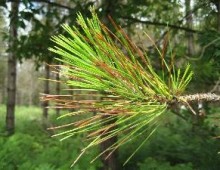“This collaborative effort has yielded a wealth of information that will help scientists better understand the basic biology of cotton and enhance the sustainable production of this globally important crop,” says plant scientist Allen Van Deynze, who led UC Davis’ participation in the sequencing project. Read more in the Central Valley Business Times
A Gossypium genome to cotton on to cellulose biosynthesis
Growing, processing and manufacturing cotton is a major global industry. In the United States, more than 200,000 domestic jobs are related to cotton production and processing, with an aggregate influence of about $35 billion on the annual U.S. gross domestic product. The fibers that have woven themselves into so many lives, however, are seen by…
Cotton genome project in AL.com
If researchers’ plans spin out as they hope, King Cotton may get a new title as a Super Plant of the 21st century…. While most U.S. cotton is used in textile production, researchers say it could become an important part of biofuel production and bioremediation. Full story at AL.com
Unraveling the Threads: Simplest cotton genome offers clues for fiber improvements
From the stockings decorating mantles to the new outfits in display windows calling to shoppers, cotton is woven into the fabric of the holiday season. For bioenergy researchers, however, fiber composition matters more than color and texture as each cotton strand is composed of more than two dozen coils of cellulose, a target biomass for…
Lifestyles of a fungal plant pathogen family
The fungi that belong to the Dothideomycetes family are found on every continent and can tolerate a wide range of environmental extremes. Additionally, several of the fungi are plant pathogens that infect nearly every major crop used for food, fiber or fuel. In the December 6, 2012 issue of PLoS Pathogens, an international team led…
Fungal pathogens – the common thread between pine and tomato
The disease that causes leaf mold on a tomato was first reported in the 1800s but hasn’t posed a major economic threat for several decades. Needle blight affects pine species around the world, causing severe economic losses. At first glance, the diseases appear unrelated but they are both caused by related fungal plant pathogens from…
C&EN covers microbiomes for biofuels development
Any new technology that emerges from animal microbiome mining would need to improve upon the proprietary enzyme systems already in companies’ arsenals. For example, enzyme company Novozymes is already marketing cellulase enzymes from Trichoderma reesei, a fungus originally discovered because it was degrading cotton military uniforms and canvas tents in the South Pacific during World War…
Cornell-led cassava project in GenomeWeb
The international partners in the Cornell-led Next Generation Cassava Breeding project plan to use genome sequencing and analysis to identify genes linked to traits that could be used to improve the breeding process. They hope to shorten the breeding cycle for new cassava down to six years and to give plant breeders more accurate evaluations…
DOE JGI partners Cornell on cassava project
Cassava, a rough and ready root crop that has long been the foundation of food security in Africa is finally getting the respect it deserves. The Bill & Melinda Gates Foundation and the Department for International Development of the United Kingdom (DFID) are investing $25.2 million to improve the staple crop’s productivity and build human…
Cheryl Kerfeld on IMG-ACT in The Scientist
“Bioinformatics has become such an integral part of research. And being able to do this, to use these tools in an informed way and in a way that’s somewhat discerning . . . is really important,” explains Cheryl Kerfeld, director of the Genomics and Bioinformatics Education Program at the Department of Energy’s Joint Genome…



